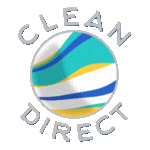How Does Pure Water Window Cleaning Systems Work?
Pure water systems in the window cleaning industry refer to advanced cleaning solutions that utilize highly purified water, devoid of any dissolved minerals or impurities, to clean surfaces such as windows and facades. This type of water is often referred to as "deionized water" or "DI water." The process of creating pure water involves removing all the dissolved solids that are typically found in tap water.
How Pure Water Systems Work
Here’s a breakdown of the process and why pure water is a superior cleaning agent:
-
Removal of Minerals: Tap water contains various minerals like calcium, magnesium, and sodium, which can leave streaks or spots when the water dries on a surface. Pure water systems use filtration methods such as reverse osmosis and de-ionization to remove these minerals.
-
Reverse Osmosis (RO): This is a filtration process that forces water through a semi-permeable membrane. The membrane blocks contaminants but allows water molecules to pass through, removing a significant percentage of dissolved solids.
-
De-Ionization: After RO, water often goes through de-ionization, which uses ion exchange resins to remove any remaining ionic impurities. The result is water with virtually zero total dissolved solids (TDS), measured in parts per million (ppm) or even parts per billion (ppb).
-
Cleaning Efficiency: Pure water naturally seeks to return to its impure state, which means when it comes into contact with dirt, grime, and organic material on windows, it effectively absorbs and lifts these impurities off the surface without the need for detergents or chemicals.
-
Environmental Benefits: Since no harsh chemicals are involved, pure water systems are more eco-friendly, reducing the environmental impact of the cleaning process.
-
Safety Advantages: With pure water systems, window cleaners can often work from the ground using extendable poles, which minimizes the risks associated with working at heights and reduces the need for ladders or scaffolding.
Examples of Pure Water Systems
The aforementioned systems like the Ionic Systems V4™️ and The Zero™️ are examples of pure water systems. They are equipped with sophisticated filtration technologies, ensuring that the water used is free of impurities, delivering a streak-free finish on Windows without the need for additional cleaning agents.
-
The Ionic Systems V4™️ integrates features like digital flow control, dual TDS monitoring, and a fully baffled tank, while utilizing a multi-stage filtration process to ensure the delivery of pure water.
-
The Zero™️ System sets a new standard with its 8-stage water treatment process, producing ultra-pure water at 0ppb, which is capable of dissolving and removing more dirt than standard pure water systems.
By using pure water, window cleaners can ensure that windows are not only clean but also free from the residues that can be left by traditional cleaning agents. This method is highly effective, cost-efficient in the long run, and is becoming increasingly popular in the window cleaning industry due to its multitude of benefits.
Compare all our systems Compare Specialty Cleaning Systems.
Contact us if you have any questions.








































































































